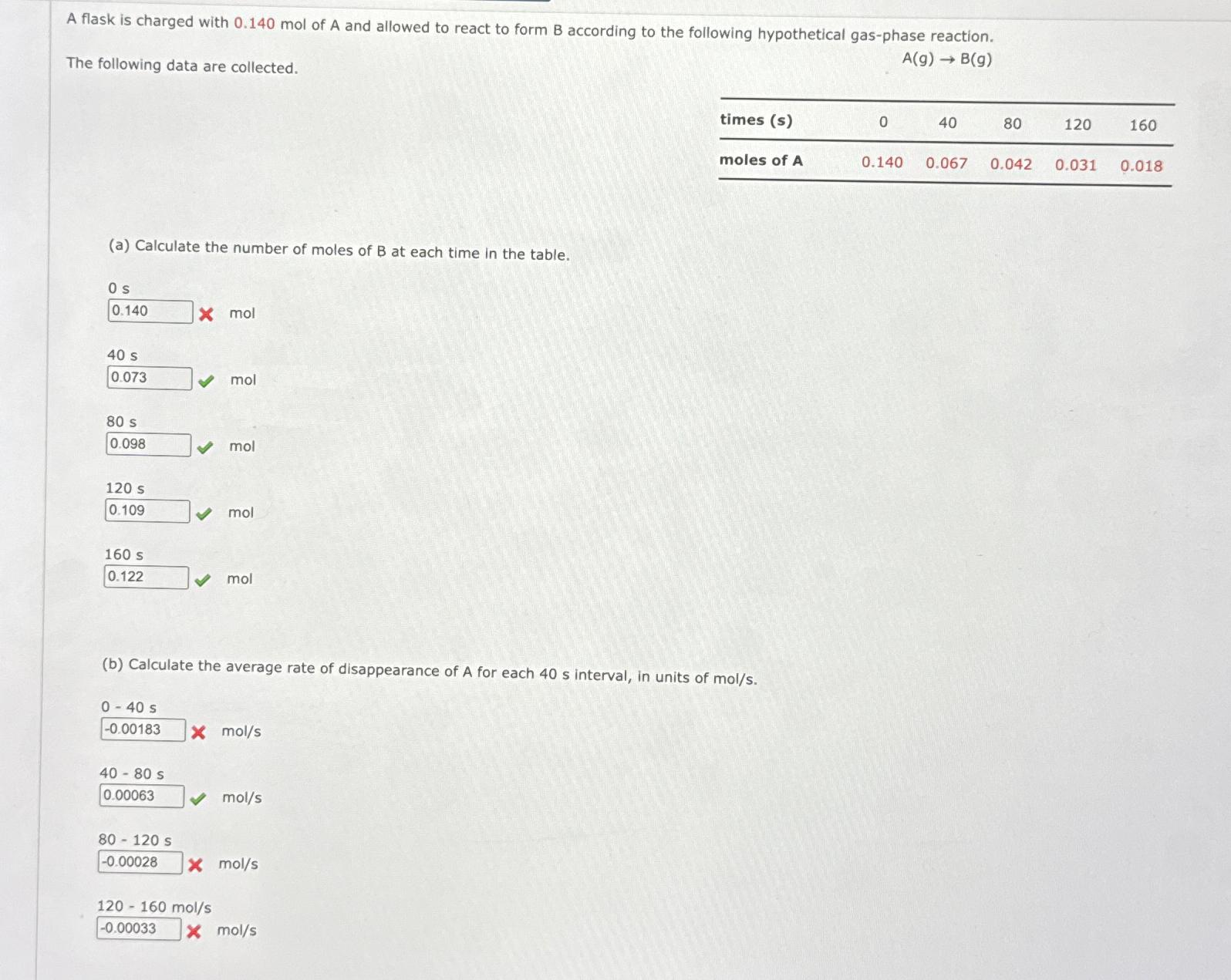Answered step by step
Verified Expert Solution
Question
1 Approved Answer
A flask is charged with 0 . 1 4 0 mol of A and allowed to react to form B according to the following hypothetical
A flask is charged with mol of A and allowed to react to form B according to the following hypothetical gasphase reaction.
The following data are collected.
tabletimes smoles of A
a Calculate the number of moles of at each time in the table.
mol
mol
mol
mol
mol
b Calculate the average rate of disappearance of A for each interval, in units of
s

Step by Step Solution
There are 3 Steps involved in it
Step: 1

Get Instant Access to Expert-Tailored Solutions
See step-by-step solutions with expert insights and AI powered tools for academic success
Step: 2

Step: 3

Ace Your Homework with AI
Get the answers you need in no time with our AI-driven, step-by-step assistance
Get Started


